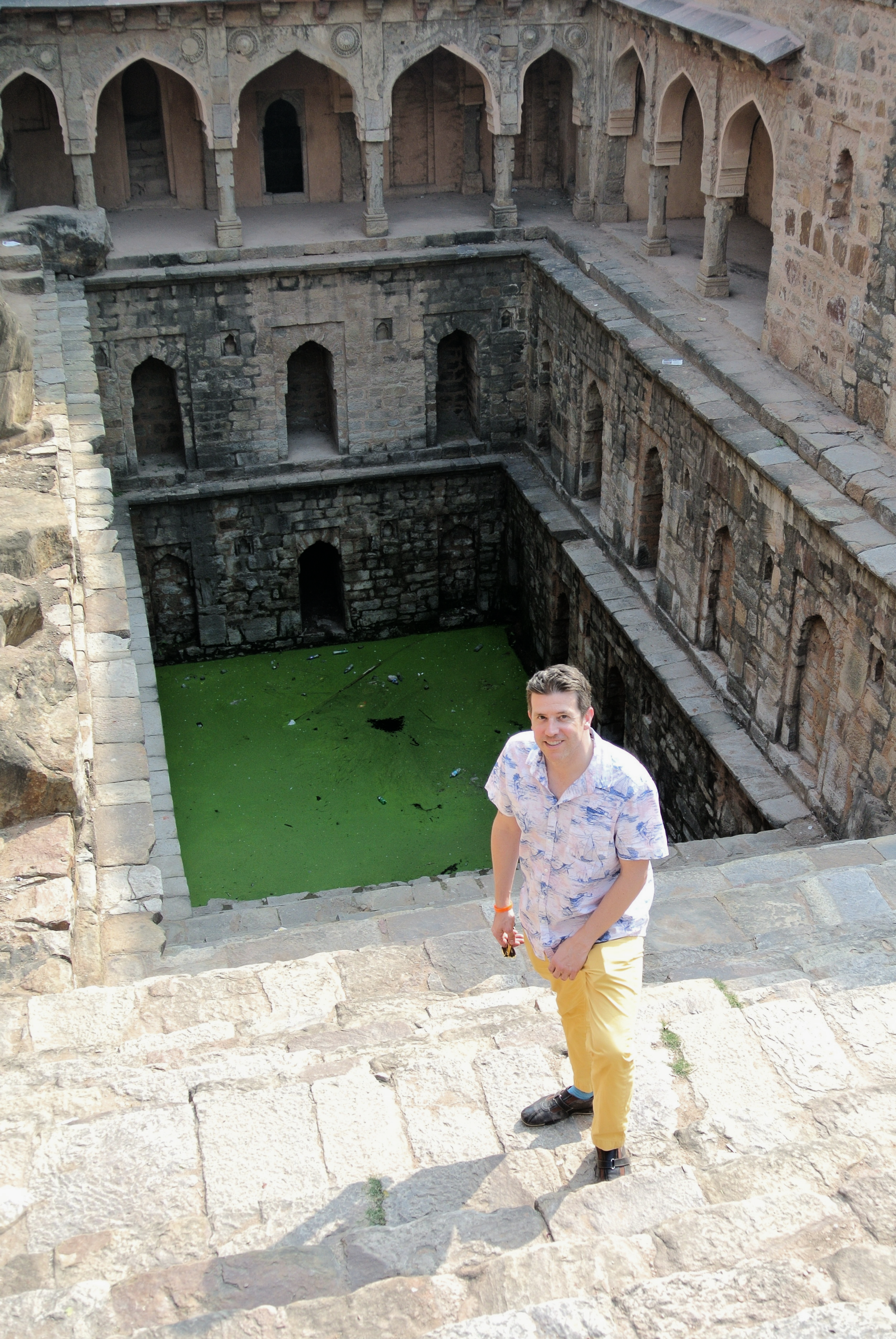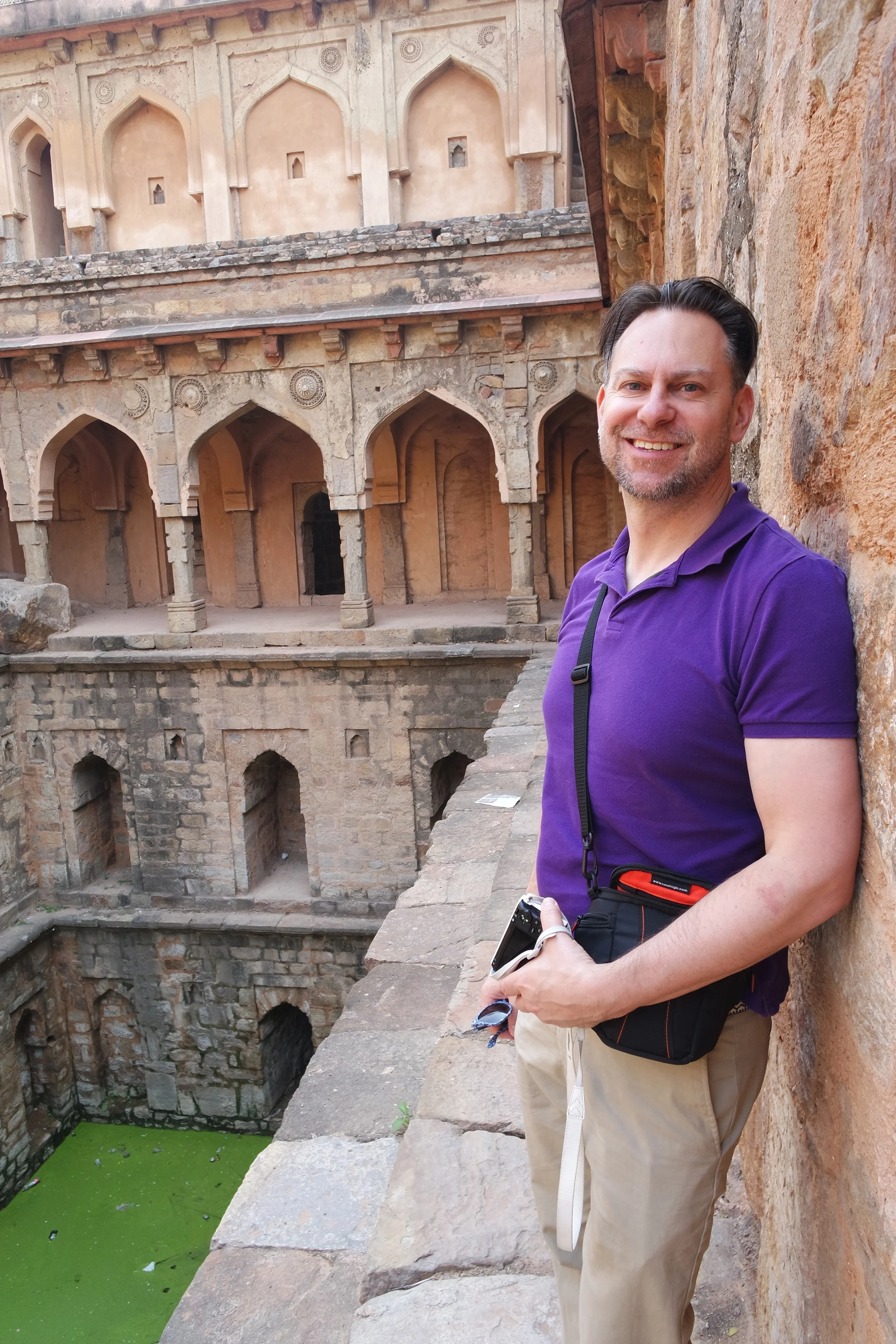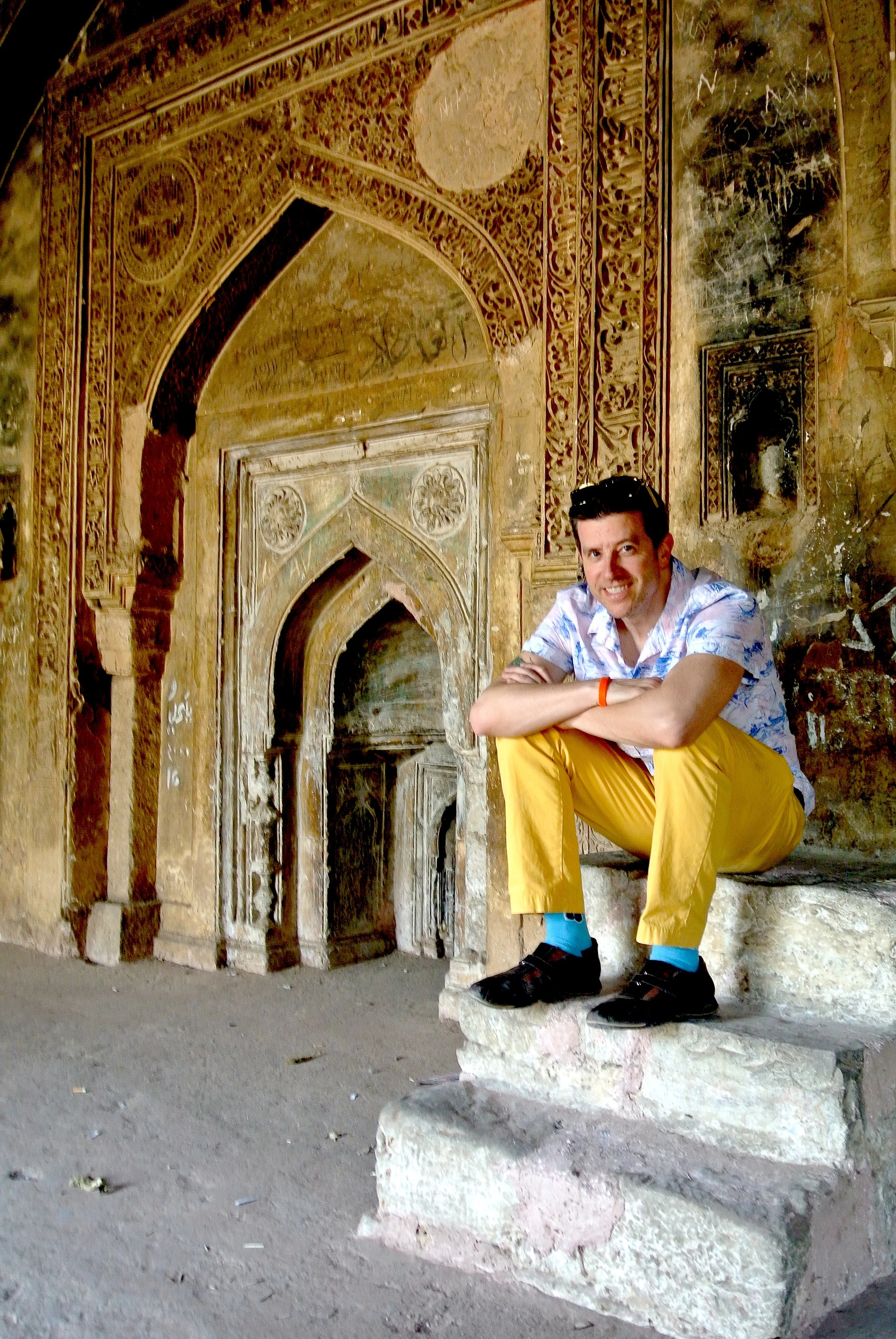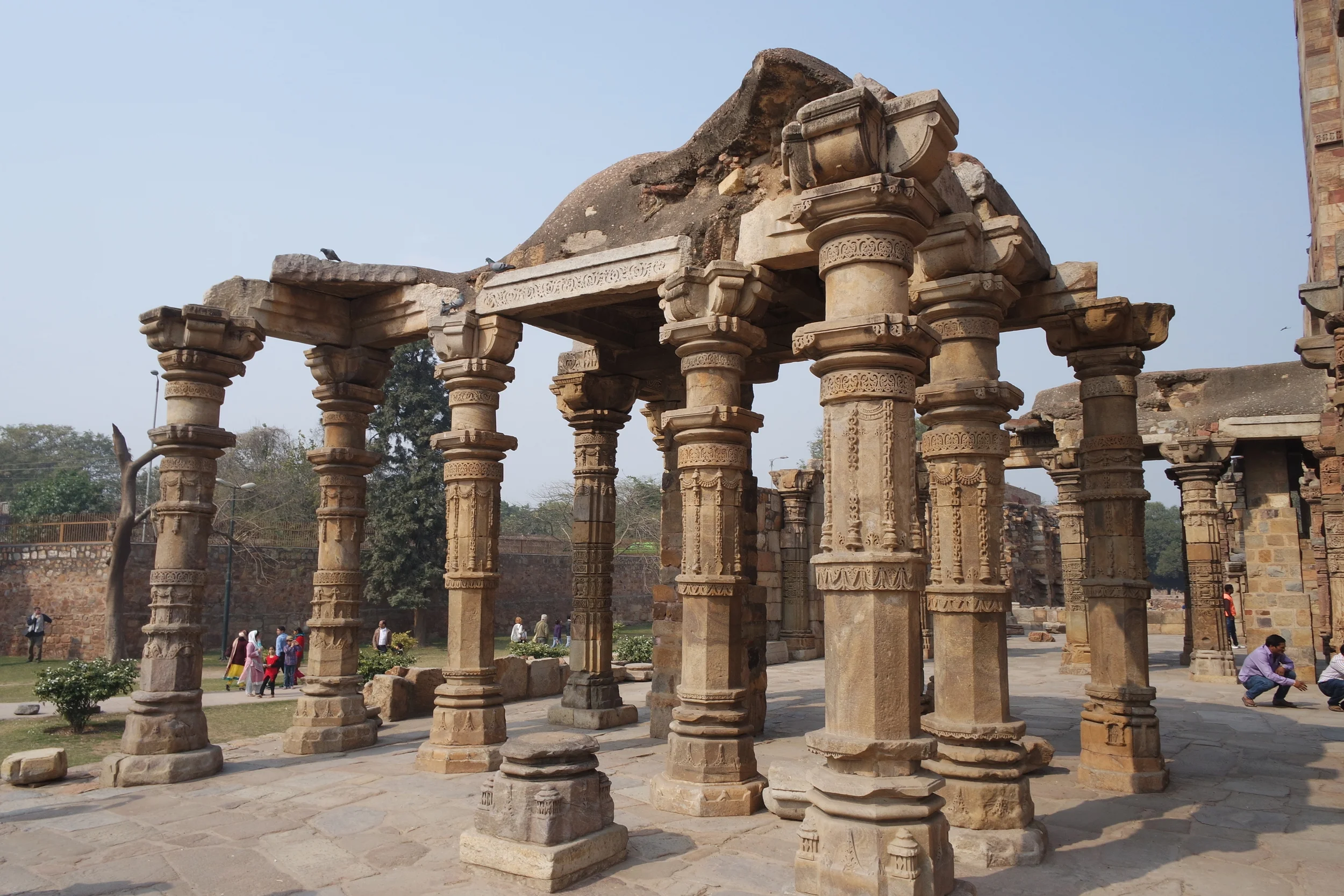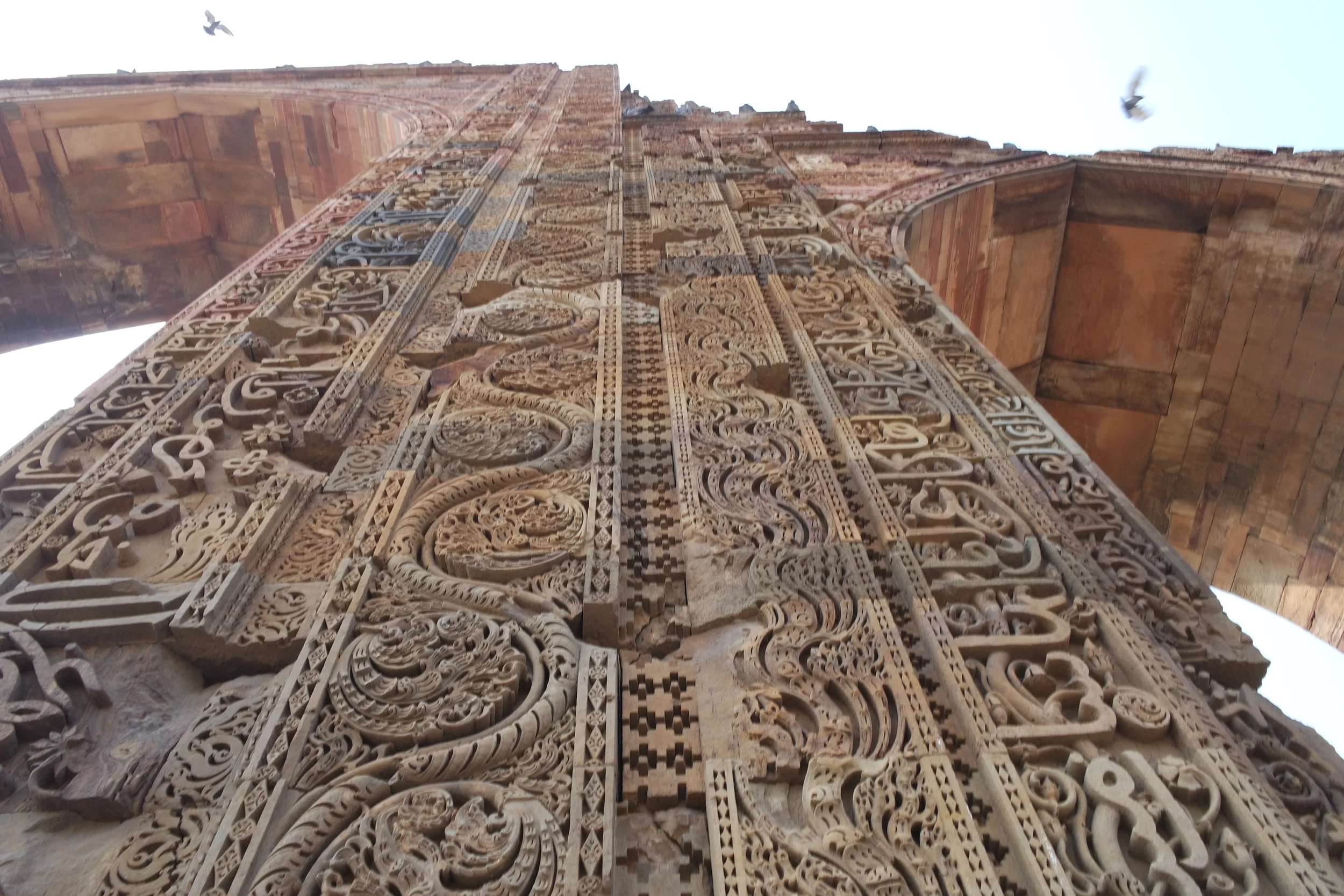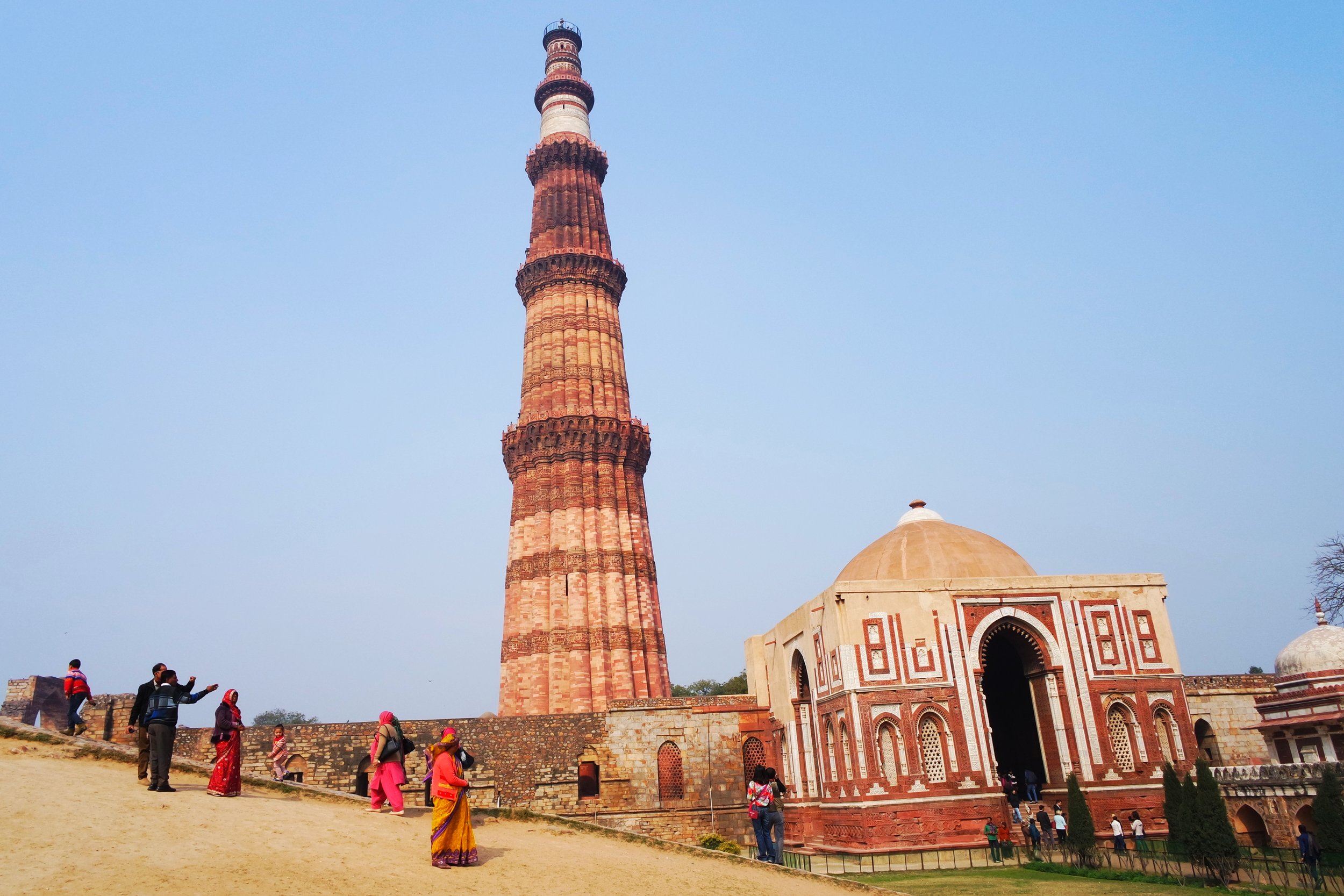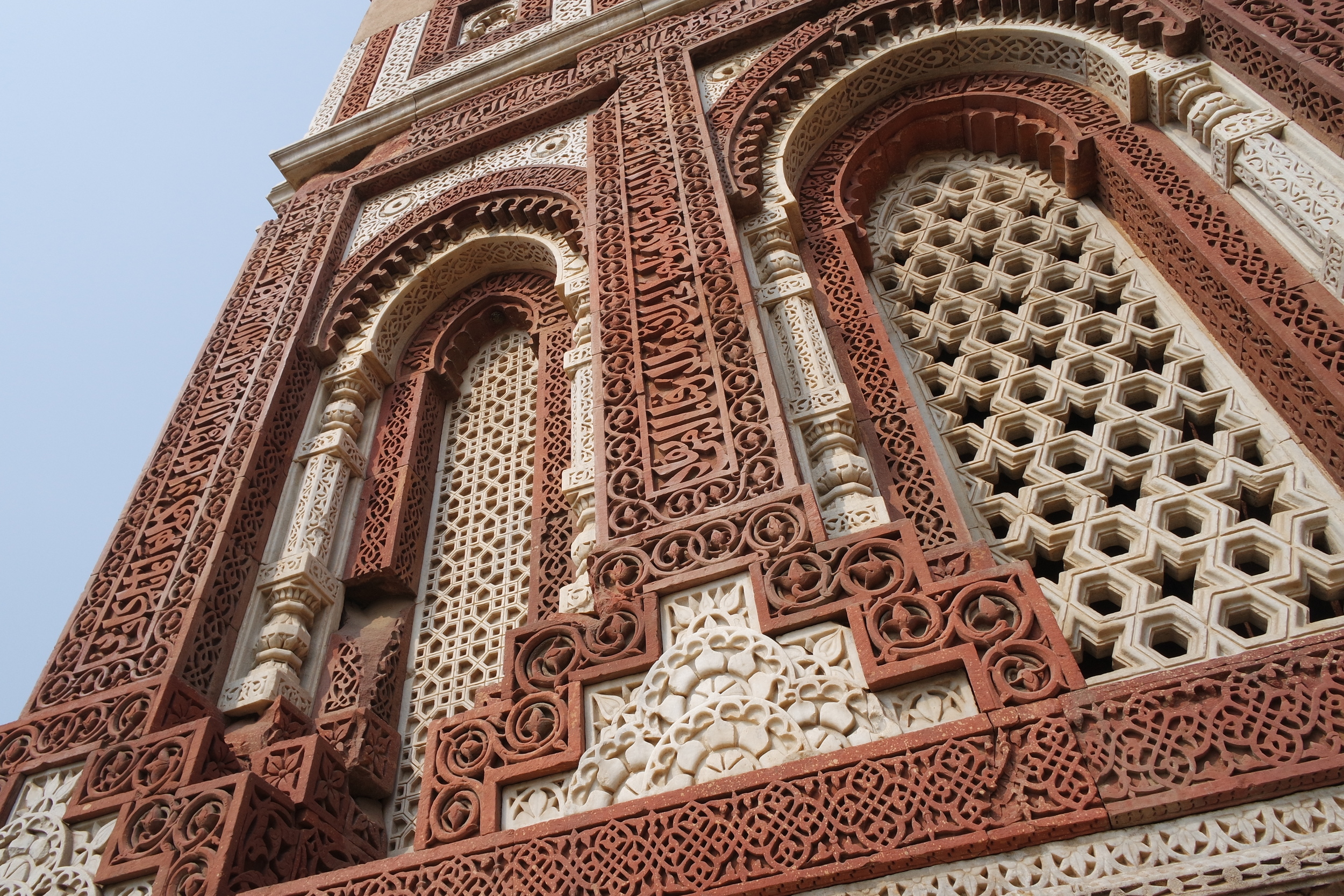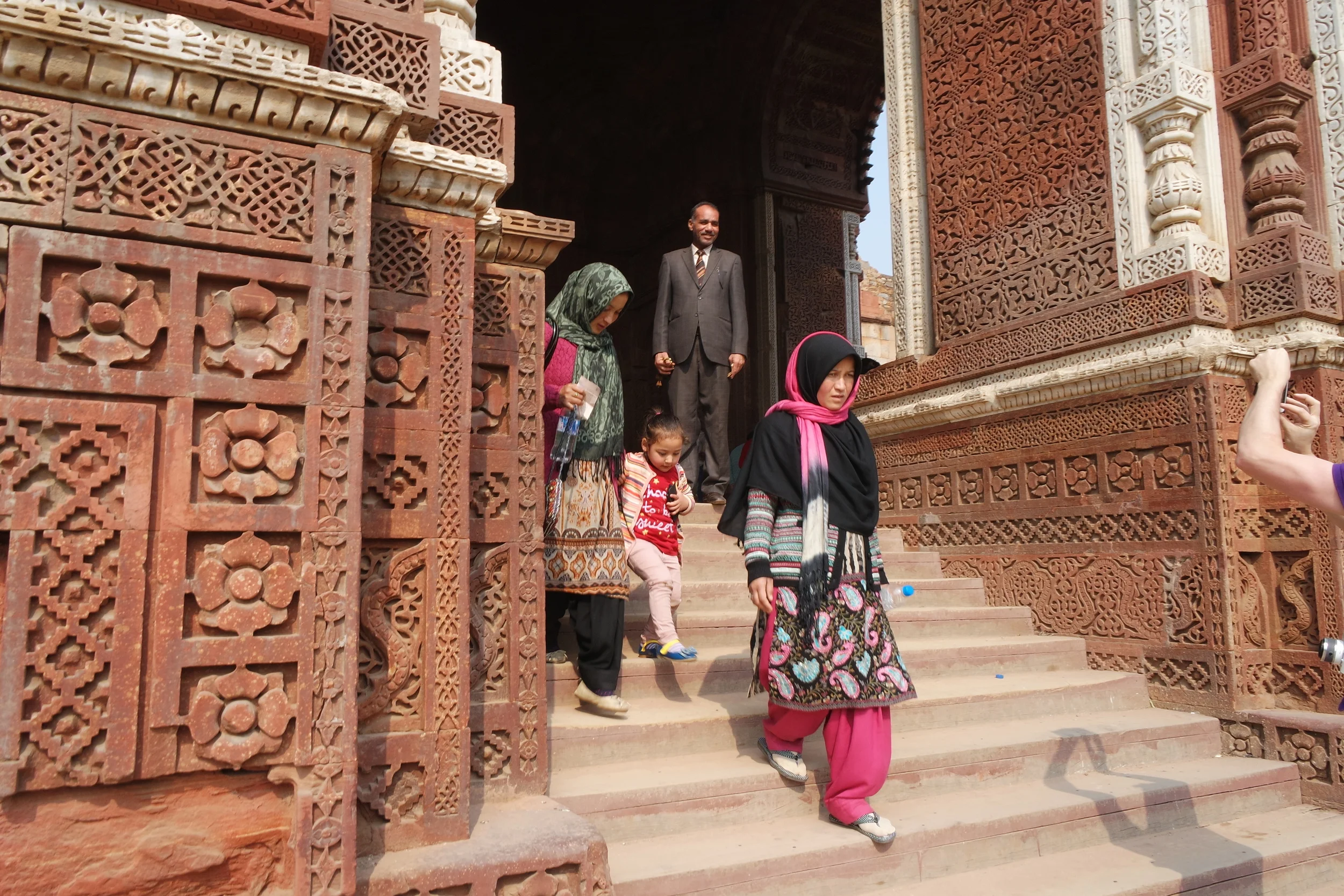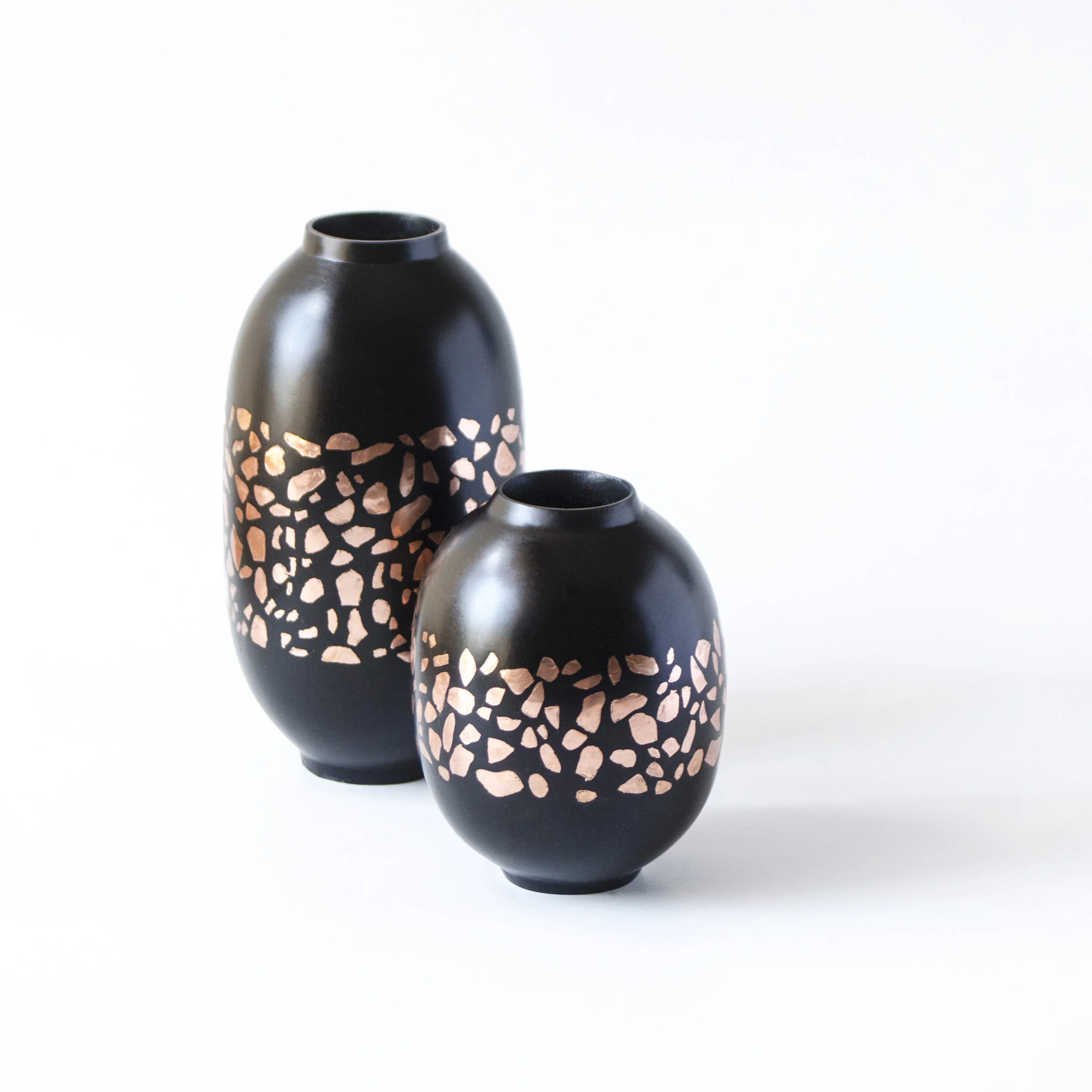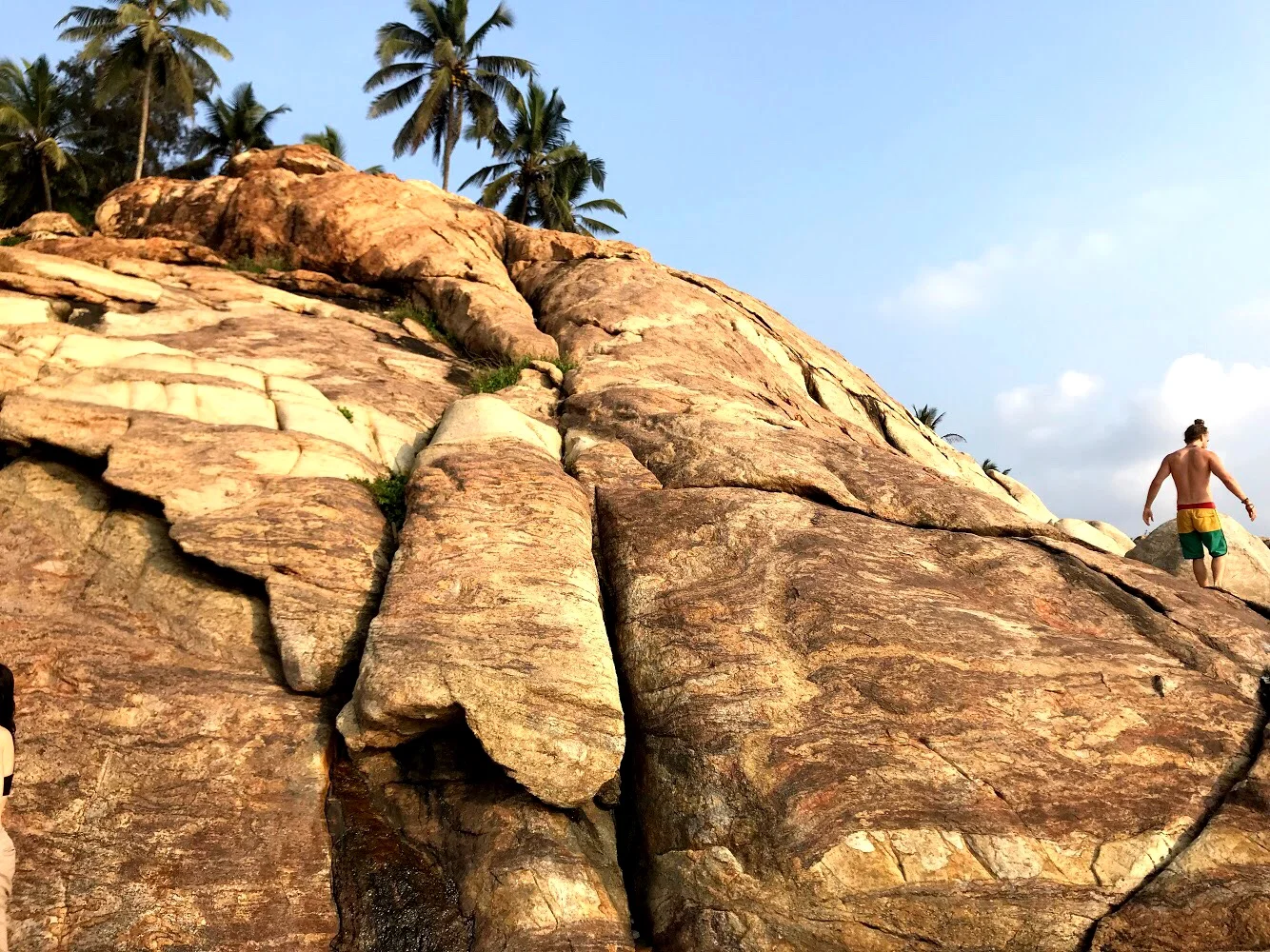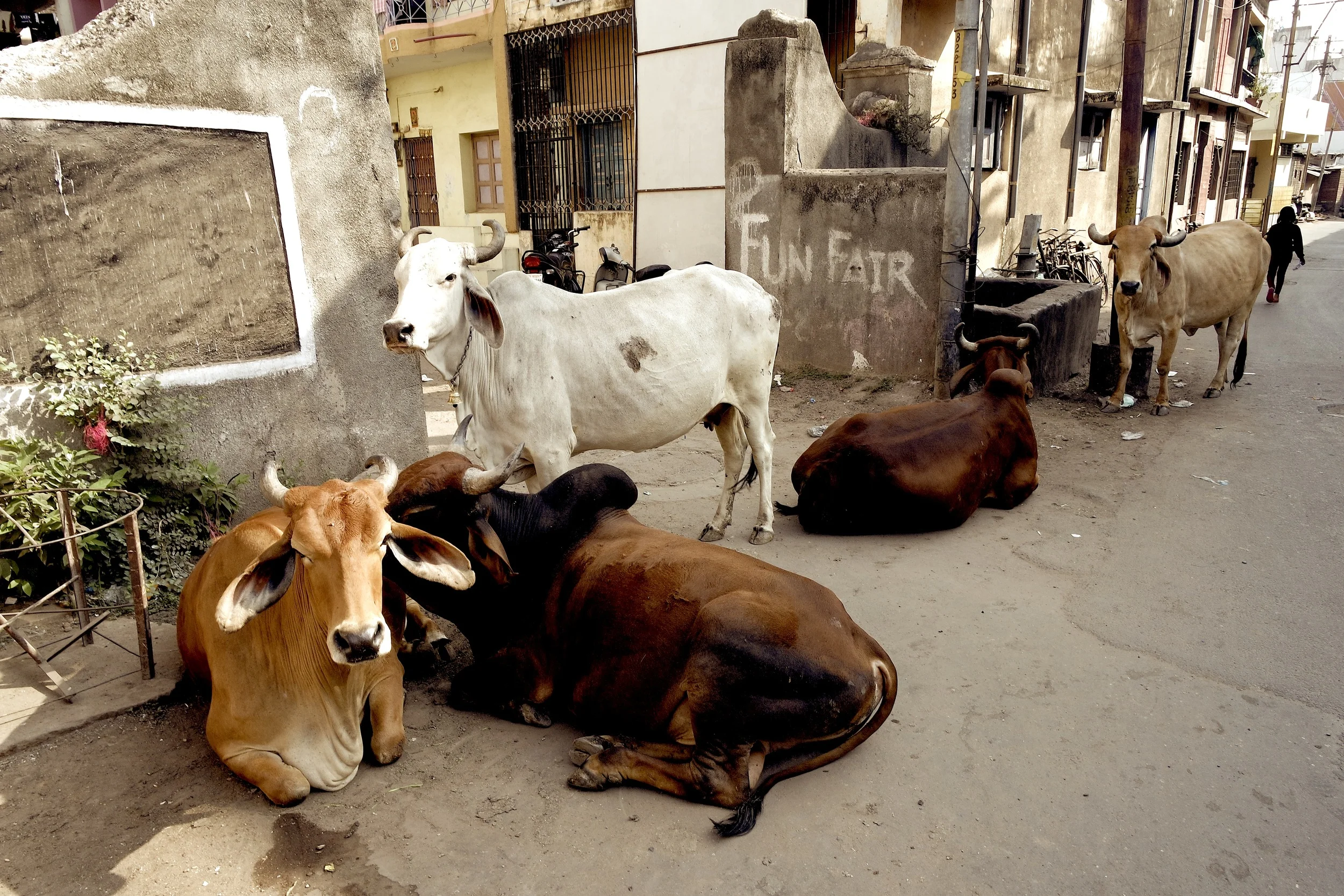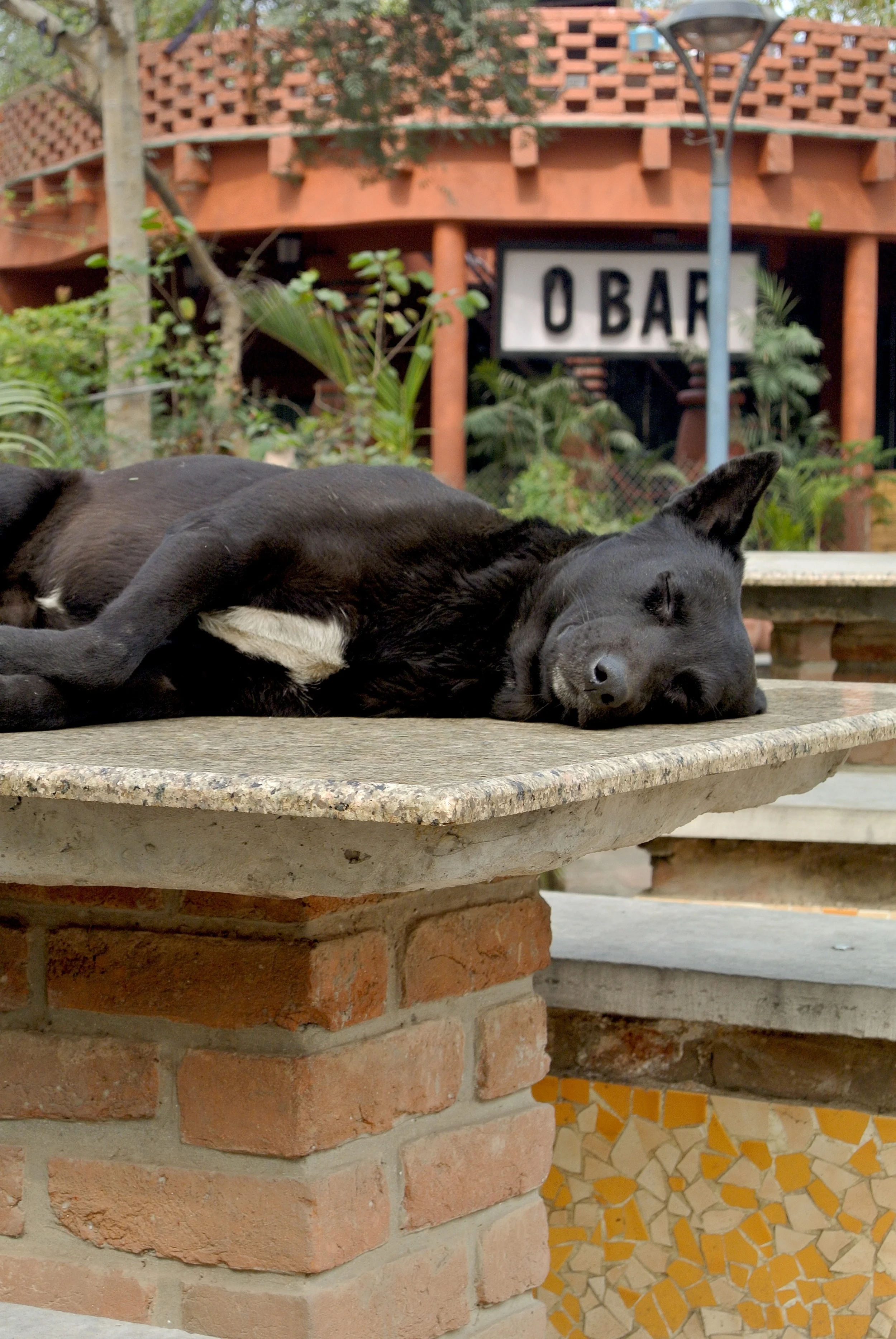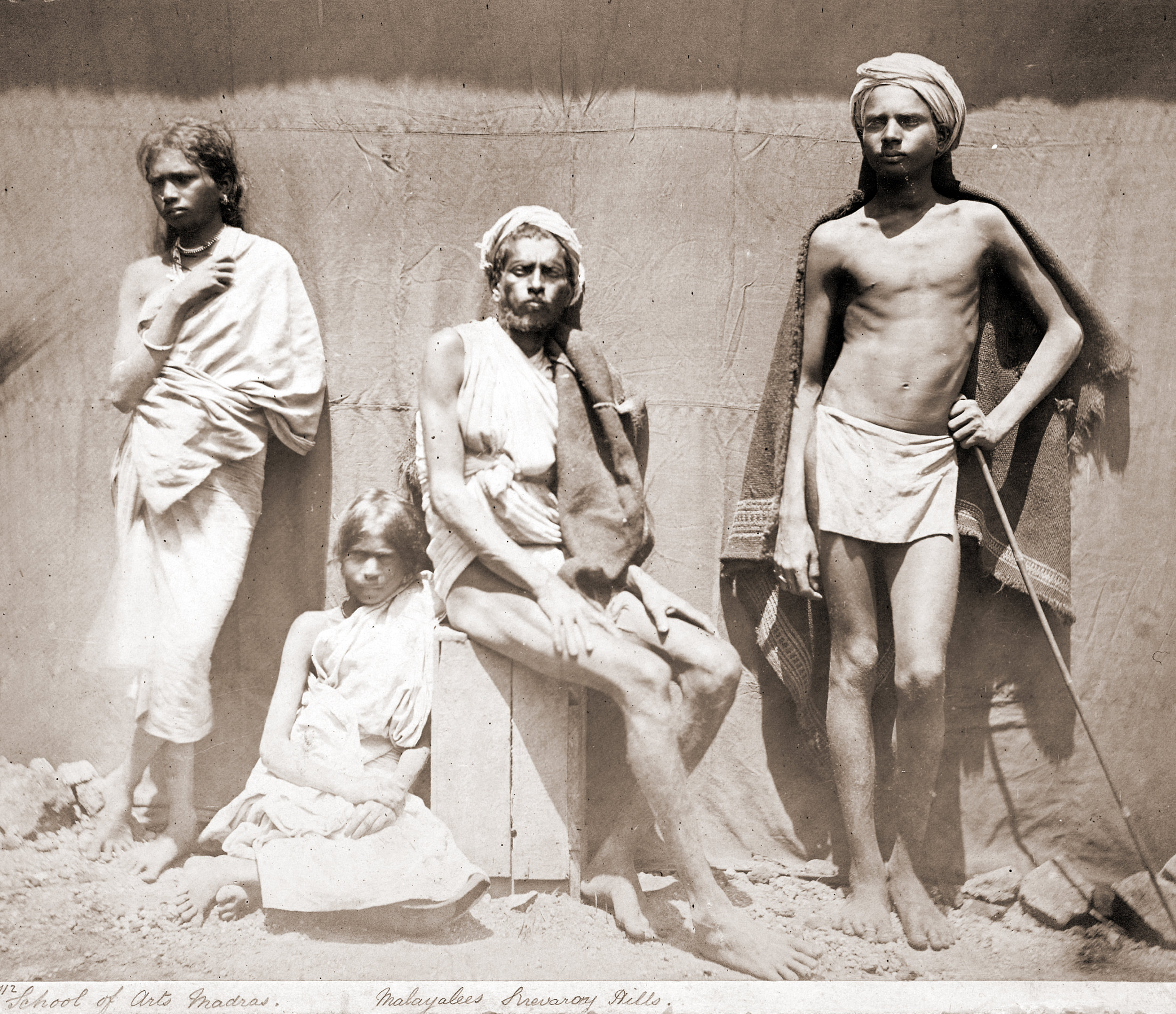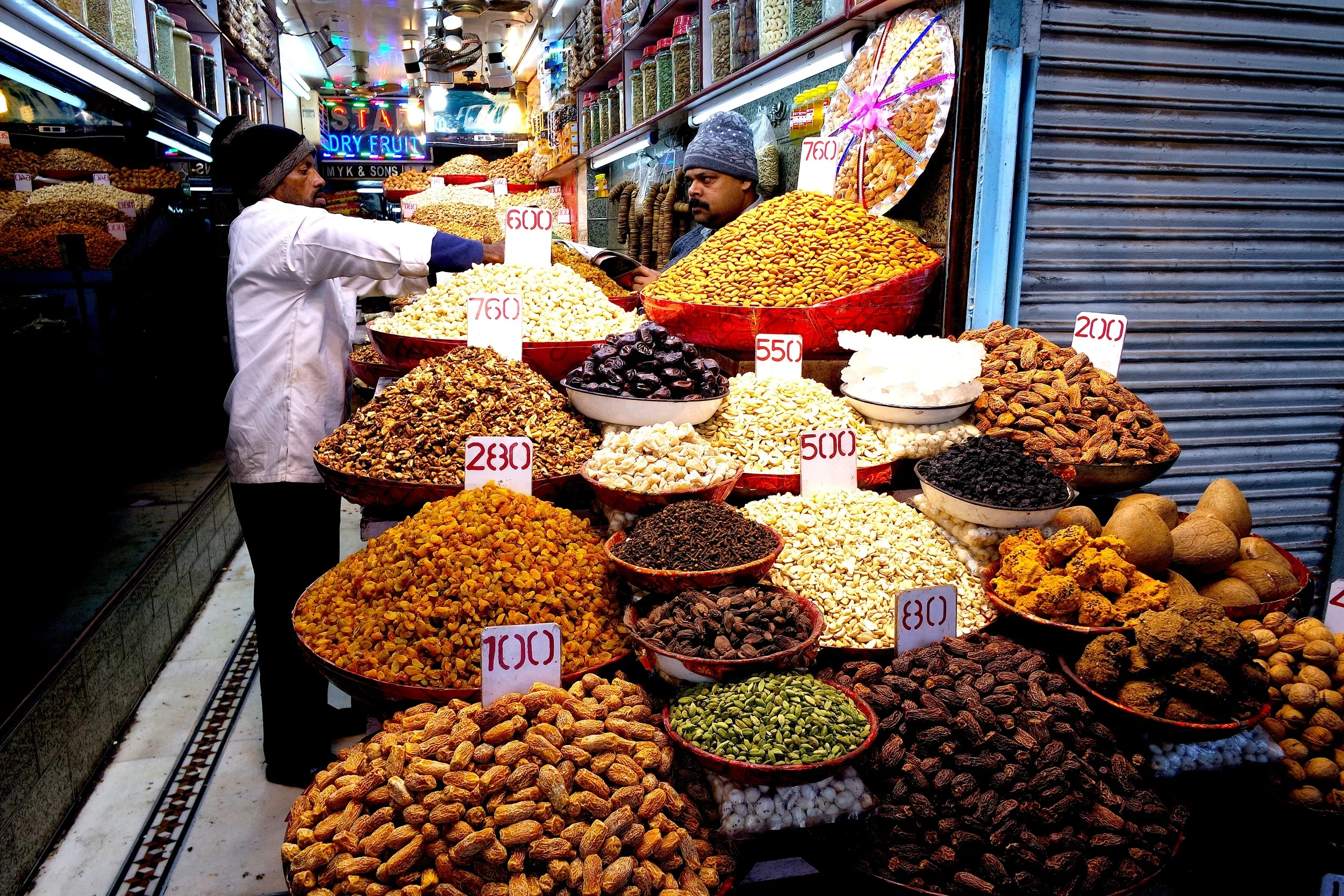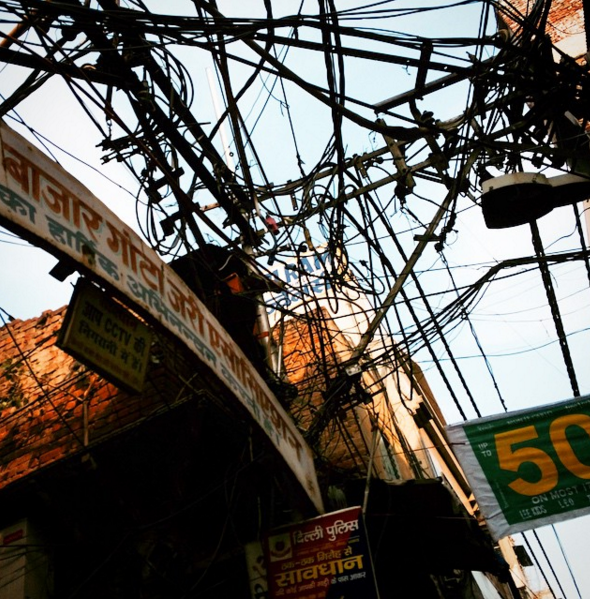Wally visiting his friend George, an American expat now living in India
Wherein we travel to Vadodara, meet Prakash and learn a secret gay greeting.
Maps will tell you the city is now known as Vadodara (pronounced "Va-doh-dra") — but most everyone we mentioned the name to just stared at us, blinking uncomprehendingly, until we followed up with, "Baroda."
"Ah, yes, Baroda."
“It translates to something like “I touch (or kiss) your feet.””
Flying High With IndiGo Airlines
We took the no-frills airline IndiGo for our flight to Baroda.
They have two ramps — one in the front and one in the back — which made boarding a smooth, pleasant experience.
Their cheeky in-flight magazine is called Hello 6E (which we imagine is a play upon "hello, sexy").
Not only was the flight on time, a testament to IndiGo's commitment to punctuality, the plane interior was clean and comfortable.
How to Greet Gays in India
Our host George met us at the airport and we headed for his apartment, located in the Ellora Park district, via a green and yellow auto rickshaw. He lives in what he described as a middle-class apartment complex and pays $160 a month for rent.
As we caught up, George told us that his friend Prakash was stopping by to meet us and taught us a phrase adopted by the Gujarati gay community. It's borrowed from the hijra (India's transsexuals) and is pronounced, "Pah-ga lah-goo." It translates to something like "I touch (or kiss) your feet." To really impress the person you meet, you drag out the last syllable so it's something like, "Pah-ga lah-goooooooooo!"
Prakash is employed by an NGO and distributes condoms and safe-sex literature. He has a soft, round, feminine face, with a touch of gloss on his full lips and perfectly plucked eyebrows, framed by dark, slightly wavy hair. This may explain why some men perceive him as hijra. He belongs to Dalit, the lowest caste, considered untouchable.
He's a total sweetheart and helps George out as a sort of assistant. We learned that the name Prakash means "light" in Hindi.
Our bringer of "light" was also quite a character.
"Justin Bieber" — which he pronounced "Bay-burr" — "is my boyfriend," he said, smiling naughtily, "and Obama is my husband." –Duke


